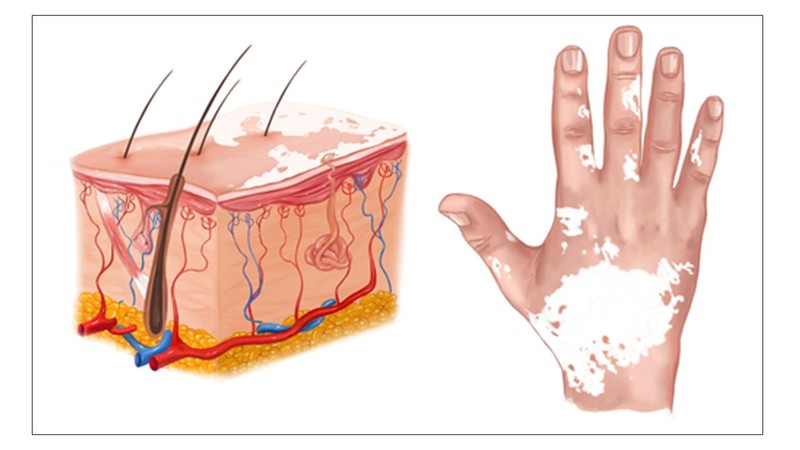A novel technique by an Indian doctor: Calculating grafting area in split-thickness skin grafting for vitiligo patients
M3 India Newsdesk Feb 16, 2018
Calculating area of skin graft for ‘Split-Thickness Skin Grafting’, the only surgical procedure for resistant Vitiligo was not such an easy task, until now when it can be done quickly with this easy technique.

‘Split thickness skin grafting’, in which a normal-colored skin graft from a patient’s own body is transferred to the diseased lesion site is the only option of treatment for resistant Vitiligo. However, there is no standardized universal technique for measuring the absolute area of graft needed for carrying out the surgery.
This issue has now been resolved with a novel, user-friendly technique that only requires an ECG paper/graph paper, a marking pen, transparent plastic film or polythene foil, and some basic math skills. Details of this innovative method have been published as a research article in the Journal of Cutaneous and Aesthetic Surgery, which is the only Pubmed indexed Dermatosurgery and Aesthetic Dermatology journal of the South Asian region.
One of the major advantages of this technique is that it can also be used by various cosmetic and plastic surgeons during grafting of skin on ulcers or skin defects caused during excision of tumors. It can also help dermatologists for scoring of various skin diseases.
The technique
All the surgeon is required to do is to simply place the transparent film over the vitiligo lesion(s) and with the help of a sketch pen, mark the boundaries of lesion/s over the film. The marked film can then be placed over a graph paper, secured with staples and calibrated accordingly. To do this, the surgeon would have to count the number of large complete squares within the grafting area mark and count the smaller squares in areas that involve half, less than half, or more than half of large squares. The total area (in cm2) can then be calculated by the following formula:
Area required for grafting in cm2 = No. of complete big squares + 1/100 x No. of small squares
Individual grafting areas can be combined to give the total area of graft required for the surgery.
Modified formula
If a surgeon finds it tedious to count small squares, they can simply count complete medium squares and use the following formula, which is a modified version of the previous equation:
Area (in cm2) = No. of complete big squares + 1/4 x No. of complete medium squares + 1/100 x No. of complete small squares
This modified technique would help save valuable time for the surgeon.
Advantages of the technique
- The technique is simple and very accurate
- It is a cost-effective method that does not involve any equipment and can hence be used in all hospital setups
- All the requirements are readily available or easy to procure
- It enables absolute measurement of the graft area, preventing excessive graft from being harvested
Other applications
- It can be used for monitoring the progress of vitiligo treatment to assess pre- and post-treatment area
- It can be applied for scoring the progress of other diseases like melasma, leprosy, plaque psoriasis, scleroderma
Alternative method
There is another technique that researchers use to calculate the area for ultrathin skin grafting for leukoderma. In this method, the cling film is placed on the skin and the lesion is marked. This film is then photocopied and the outlined area on the paper is cut out and weighed on an electronic balance. The total grafting area is then calculated depending on the weight of cut paper.
The advantage that the new technique has over this method is clear. One, the new technique does not require a copy machine or a weighing scale. Secondly, the new technique provides the area in absolute number- in cm2, making it far more efficient for practice in the hospital setting.
Read the original article here.
-
Exclusive Write-ups & Webinars by KOLs
-
Daily Quiz by specialty
-
Paid Market Research Surveys
-
Case discussions, News & Journals' summaries